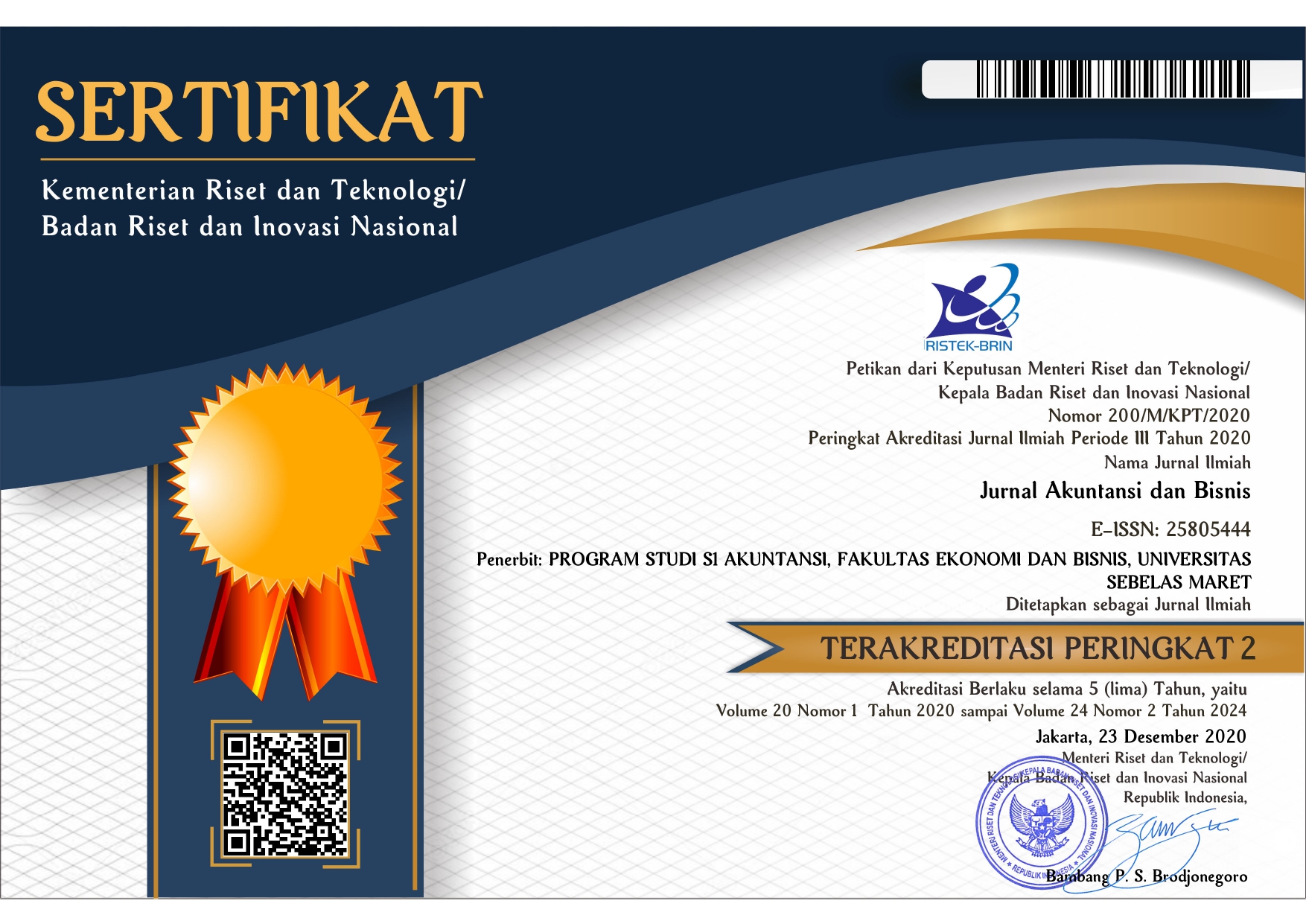Analisis Efisiensi Perusahaan Manufaktur yang Terdaftar di Bursa Efek Jakarta Sebelum dan Sesudah Berlakunya Undang-Undang Perpajakan 2000
Abstract
References
Altman, E.I. 1968. September. “Financial Ratios, Discriminant Analysis and Prediction of Corporate Bankruptcy”. The Journal of Finance: 589 – 609.
Beaver, W. H. 1968. “Financial Ratios as Predictor of Failure”. Empirical Research in Accounting, Supplement to Journal of Accounting Research: 71 – 111.
Manurung, Adler. 1996. “Assets Pricing Model on The Jakarta Stock Exchange: A Nonparametric Analysis”. Kelola Gajah Mada University Business Review 12(5): 70-79.
Machfoedz, Mas’ud. 1999. “Pengaruh Krisis Moneter pada Efiensi Perusahaan Publik di Bursa Efek Jakarta”. Jurnal Ekonomi dan Bisnis Indonesia 14(1): 37-49.
Payamta dan Mas’oed Machfoedz. 1999. “Evaluasi Kinerja Perusahaan Perbankan Sebelum dan Sesudah Menjadi Perusahaan Publik Di Bursa Efek Jakarta”. Kelola Gadjah Mada Business Review 20(8): 55-59
Radianto, Wirawan Endro Dwi. 2004. “Analisis Efisiensi Perusahaan Bank yang Terdaftar di BEJ Sebelum dan Sesudah Diberlakukannya Undang-Undang Perpajakan 2000”. Makalah SNA VII. Denpasar, Bali.
Suandi, Erly. 2002. Hukum Pajak. Edisi Kedua. Jakarta: Salemba Empat
Zainuddin dan Jogianto Hartono. 1999. “Manfaat Rasio Keuangan dalam Memprediksi Pertumbuhan Laba: Suatu Studi Empiris pada Perusahaan Perbankan yang Terdaftar di Bursa Efek Jakarta”. Jurnal Riset Akuntansi Indonesia 12(1): 66-90.
Zmijewski, ME. 1984. “Methodological Issues Related to The Estimation of Financial Distress Model.” Journal of Accounting Research: 59-82.
____________. 2004. “Mencermati 100 Pembayar Pajak Terbesar”. Berita Pajak 1509: 36-42.
_____________. 2000. Indonesian Capital Market Directory 2000. Jakarta: Institute for Economics and Financial Research.
_____________. 2003. Indonesian Capital Market Directory 2003. 9th Edition. Vol.1 dan 2. Jakarta: Institute for Economics and Financial Research.
DOI: http://dx.doi.org/10.20961/jab.v6i2.46
Jurnal Akuntansi dan Bisnis (JAB)
ISSN 1412-0852 (print), 2580-5444 (online)
Published by Accounting Study Program, Faculty of Economics and Business, Universitas Sebelas Maret, Indonesia

JAB on http://jab.fe.uns.ac.id/index.php/jab is licensed under a Creative Commons Attribution-ShareAlike 4.0 International License










